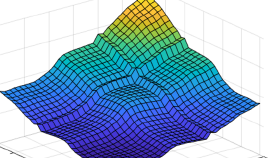
Camera spectral sensitivity (CSS) establishes the connection between scene radiance and device-captured RGB tristimulus values. Since the spectral sensitivity of most color imaging devices typically deviates from that of human vision or a standard color space and also noise is often introduced during the process of photoelectric signal conversion and transmission, the design of an efficient CSS with noise robustness and high color fidelity is of paramount importance. In this paper, we propose a CSS optimization method with noise consideration that designs theoretically an optimal CSS for each noise level. Additionally, taking practical considerations into account, we further extend the proposed method for a universally optimal CSS adaptable to diverse noise levels. Experimental results show that our optimized CSS is more robust to noise and has better imaging performance than existing optimization methods based on a fixed CSS. The source code is available at https://github.com/xyu12/Joint-Design-of-CSS-and-CCM-with-Noise-Consideration-EI2024.

The performance of colour correction algorithms are dependent on the reflectance sets used. Sometimes, when the testing reflectance set is changed the ranking of colour correction algorithms also changes. To remove dependence on dataset we can make assumptions about the set of all possible reflectances. In the Maximum Ignorance with Positivity (MIP) assumption we assume that all reflectances with per wavelength values between 0 and 1 are equally likely. A weakness in the MIP is that it fails to take into account the correlation of reflectance functions between wavelengths (many of the assumed reflectances are, in reality, not possible). In this paper, we take the view that the maximum ignorance assumption has merit but, hitherto it has been calculated with respect to the wrong coordinate basis. Here, we propose the Discrete Cosine Maximum Ignorance assumption (DCMI), where all reflectances that have coordinates between max and min bounds in the Discrete Cosine Basis coordinate system are equally likely. Here, the correlation between wavelengths is encoded and this results in the set of all plausible reflectances 'looking like' typical reflectances that occur in nature. This said the DCMI model is also a superset of all measured reflectance sets. Experiments show that, in colour correction, adopting the DCMI results in similar colour correction performance as using a particular reflectance set.

RGB-IR sensor combines the capabilities of RGB sensor and IR sensor in one single sensor. However, the additional IR pixel in the RGBIR sensor reduces the effective number of pixels allocated to visible region introducing aliasing artifacts due to demosaicing. Also, the presence of IR content in R, G and B channels poses new challenges in accurate color reproduction. Sharpness and color reproduction are very important image quality factors for visual aesthetic as well as computer vision algorithms. Demosaicing and color correction module are integral part of any color image processing pipeline and responsible for sharpness and color reproduction respectively. The image processing pipeline has not been fully explored for RGB-IR sensors. We propose a neural network-based approach for demosaicing and color correction for RGB-IR patterned image sensors. In our experimental results, we show that our learning-based approach performs better than the existing demosaicing and color correction methods.